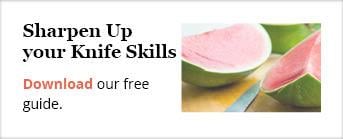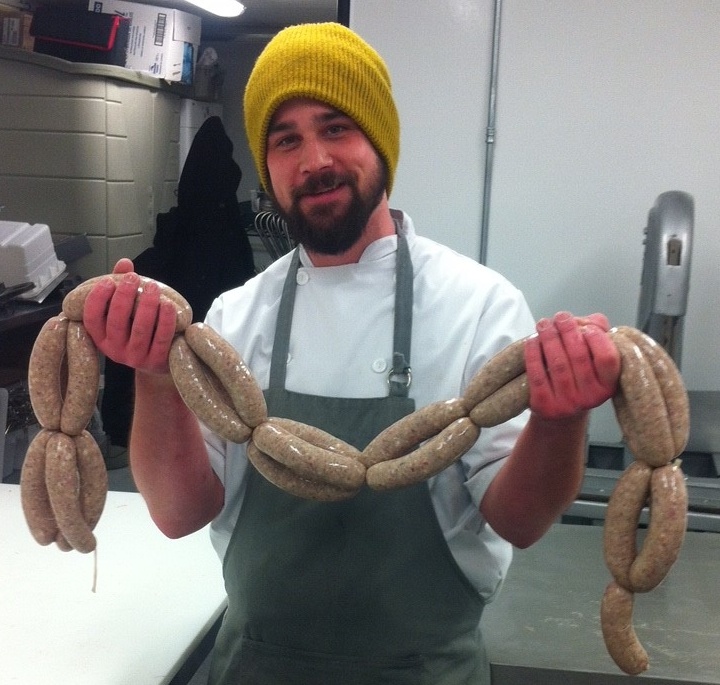I would bet that at this very moment one of the most important kitchen tools is hiding in your house, shoved in the back of some miscellaneous drawer. That hunk of steel with a handle on it, that you probably got as a hand me down, is in fact a honing steel. When in the kitchen, I am constantly picking one up to hone my knives before use. The idea behind honing is essentially that you are re-aligning the bevel (sharp edge) of the knife. Honing is not sharpening! Sure, it makes your knife feel sharper, however it will not sharpen a dull knife. No matter how many times you rub your knife across a steel, if the edge is dull you will need to sharpen it using a stone to remove metal and refine the edge.
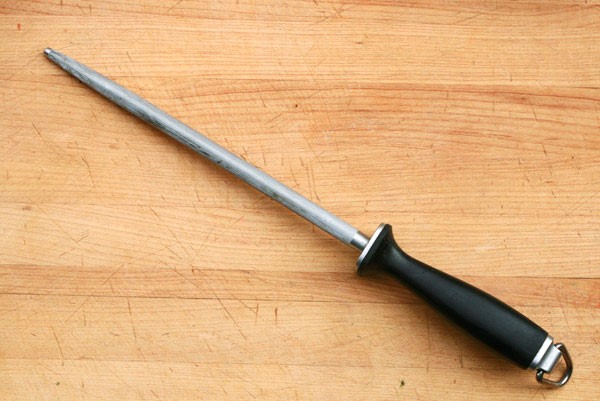 Steels come in different shapes and sizes and some types are even impregnated with diamond dust or made from ceramic. However, they all do the exact same thing: realign the knife edge. Using the knife’s bevel angle (usually 20 degrees off center for German steel knifes and 14-16 for Japanese) as a guide, you essentially run the knife from heel to tip down the length of the steel while holding the steel vertical with a firm grip.
Steels come in different shapes and sizes and some types are even impregnated with diamond dust or made from ceramic. However, they all do the exact same thing: realign the knife edge. Using the knife’s bevel angle (usually 20 degrees off center for German steel knifes and 14-16 for Japanese) as a guide, you essentially run the knife from heel to tip down the length of the steel while holding the steel vertical with a firm grip.
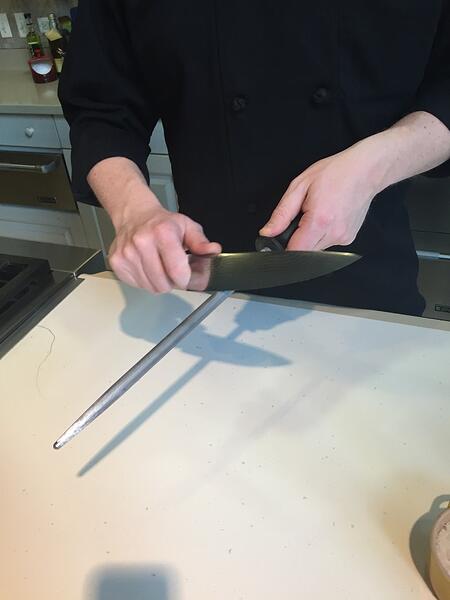 You only need a loose pressure on the knife itself and roughly 6-8 passes over the steel to accomplish a honed edge. Pay attention to the sound the knife makes while being honed. It will usually tell you if you have the angle right (the higher pitched the higher the angle). Use a honing steel on your knives every time you pick them up or when using your knives for extended periods of time. You will know when you need to hone- the knife will lose its “bite”.
You only need a loose pressure on the knife itself and roughly 6-8 passes over the steel to accomplish a honed edge. Pay attention to the sound the knife makes while being honed. It will usually tell you if you have the angle right (the higher pitched the higher the angle). Use a honing steel on your knives every time you pick them up or when using your knives for extended periods of time. You will know when you need to hone- the knife will lose its “bite”.
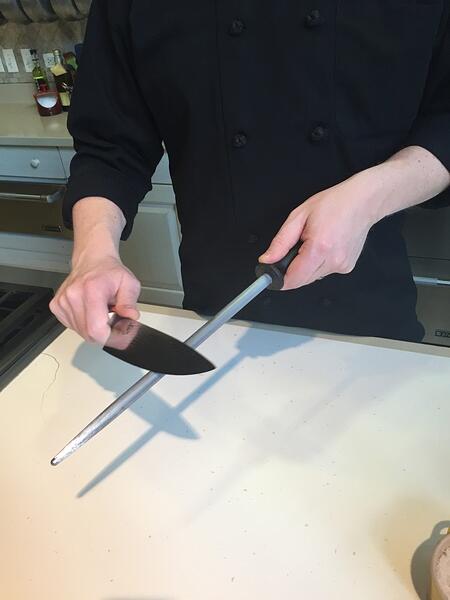
For further instruction and clarification, please check out The Chopping Block's most popular class: Knife Skills. In our Knife Skills class, we'll take you through knife construction all the way to knife cuts. Our May class calendar was just released this morning, so we have many different options to fit your schedule.
In the meantime, download our free guide Knife Skills 101 to get practicing at home. 